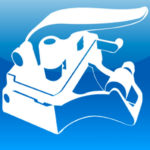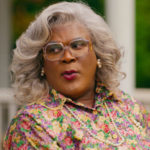DaVinci Resolve 10 Used on “Need for Speed"
March 24, 2014, 03:03 PM
https://www.aotg.com/davinci-resolve-10-used-on-need-for-speed/
“There was a team aspect that went into the post process for this film that enabled us to start work on color much earlier than the norm, which also allowed the color to evolve with the cut over time,†said Mark Graziano, Executive Vice President of Post Production at DreamWorks Studios. “In addition, this collaborative workflow afforded us the luxury of having screenings at a higher resolution with a more refined picture.
“Mark put us in a really fantastic place early on in the post process as far as 2K DI color,†he continued. “The workflow at Bandito Brothers coupled with Mark's color helped us put our best foot forward for important screenings very early on, five to six months in advance of delivery. It also enabled us to take our time through the process of refining the picture, as opposed to the frantic pace at the end of the film that is typical.â€
In addition, Bandito Brothers were able to provide 2K color corrected footage for 3D conversions. According to Graziano, very rarely does a stereo conversion provider receive color corrected files to use for its conversion process, and Osborne's advanced color work made it much easier to address creative notes and made the overall 3D process smoother.
Based on the popular series of video games, “Need for Speed†is a high octane, action packed thrill ride that follows a street racer on a cross country race of revenge. Osborne was tasked with enhancing the film’s authentic look, while also creating a rich setting with high saturation and strong contrasts to help convey mood, tone and intensity. With numerous high energy race scenes and real life stunts, Osborne used DaVinci Resolve 10 to subtly heighten emotion and excitement, helping to draw the audience in through color.
“DP Shane Hurlbut introduced me to photographer Todd Hido, and we used his work as inspiration to achieve a natural look that still had an edge,†said Osborne. “We often had three or four different sources of greens, yellows and blues, so a mixture of warms and cools with different gradients across the frame, but still maintained a source of light. DaVinci Resolve’s Power Windows, custom curves, chroma keys and luminance keys helped me finesse these looks and enhance the qualities in Shane’s footage.â€
Osborne noted that there were several major race scenes where color not only enhanced the intensity, but was also necessary for consistency. “The lighting alternated between sun and heavy clouds in one scene, and that change can distract the audience and take them out of the experience. I used Power Windows, keys and curves to maintain a consistent overcast look with cooler colors and a saturation pop for effect, which also helped convey a darker, more turbulent mood,†he explained.
Osborne added: “On the flip side, there was a big race sequence in the Red Rock Canyon desert, and the red rocks weren't filming consistently. We wanted them warm and yellow to play up the heat and tension, but sometimes they looked cool and blue. On top of that, the scene is shot in and out of cars, between the rocks and then back in the cars. DaVinci Resolve’s tracker was a big help in delivering precise color in a snap.â€
Osborne was also able to rely on DaVinci Resolve’s auto key frame tracker without having to extensively track and key frames manually. “Tracking made so much difference for me,†said Osborne. “DaVinci Resolve’s auto tracking got it right the first time. Some shots can move too fast for a system to handle, and you have to go in manually and fix them, but that rarely happened with DaVinci Resolve. It’s these things that add up and save on time.
“It’s also so user friendly that I don’t have to think about the technology and tools when I work. Instead, I can focus on crafting the image and stay in the creative process. There was a lot of meticulous color that went into this film, and it draws the audience in and helps tell the story,†he concluded.
“We don't just have a dedicated DaVinci Resolve suite at our facility. Blackmagic Design makes up the backbone of our operations with a Videohub router, numerous DeckLink cards and HyperDeck Studio Pro SSD recorders. We were thrilled to have an artist like Mark showcase his creativity and sophistication in our color suite,†said Jacob Rosenberg, CTO and Director at Bandito Brothers. “Scott Waugh is not only the film’s director, but he’s also a co founder of Bandito and an editor on the film. So ‘Need for Speed’ was a really personal project, and we were all deeply invested. Mark came in and immediately invested himself 100 percent.â€
Press Photography
Product photos of DaVinci Resolve, Videohub, DeckLink and HyperDeck Studio Pro are available at www.blackmagicdesign.com/press/images.
About Blackmagic Design
Blackmagic Design creates the world’s highest quality video editing products, digital film cameras, color correctors, video converters, video monitoring, routers, live production switchers, disk recorders, waveform monitors and film restoration software for the feature film, post production and television broadcast industries. Blackmagic Design’s DeckLink capture cards launched a revolution in quality and affordability, while the company’s Emmy™ award winning DaVinci color correction products have dominated the television and film industry since 1984. Blackmagic Design continues ground breaking innovations including stereoscopic 3D and 4K workflows. Founded by world leading post production editors and engineers, Blackmagic Design has offices in the USA, United Kingdom, Japan, Singapore, and Australia. For more information, please check www.blackmagicdesign.com.
Fremont, CA - March 24, 2014 - Blackmagic Design today announced that DaVinci Resolve 10 was used by freelance colorist Mark Todd Osborne for advanced color on the Hollywood film “Need for Speed.” Osborne worked at LA based production and post company Bandito Brothers’ state of the art facility on the 2K DI color for various screenings and previews.
#blackmagic design#davinci resolve#need for speed#dreamworks
Newest from AOTG.com
-

Daniel George McDonald on Editing Cheer's Season 2 Finale
Daniel George McDonald sits down to discuss creating the finale for Cheer Season 2.
-

Editing The Black Lady Sketch Show
Gordon sits down with the editorial team of The Black Lady Sketch Show to discuss their approach to ...
-

Philip White on Crafting A Madea Homecoming's Music
Gordon sits down with Philip to discuss his work with Tyler Perry and his latest film A Madea Homeco...
Site Links
Tools
Sister Sites
© 2007-2025 www.aotg.com Ver. 3.0 All Content created and posted by Art of the Guillotine users Art of the Guillotine graphics, logos, designs, page headers, button icons, scripts, and other service names are the trademarks of Art of the Guillotine Inc. Use of this material outside of this site is strictly prohibited.